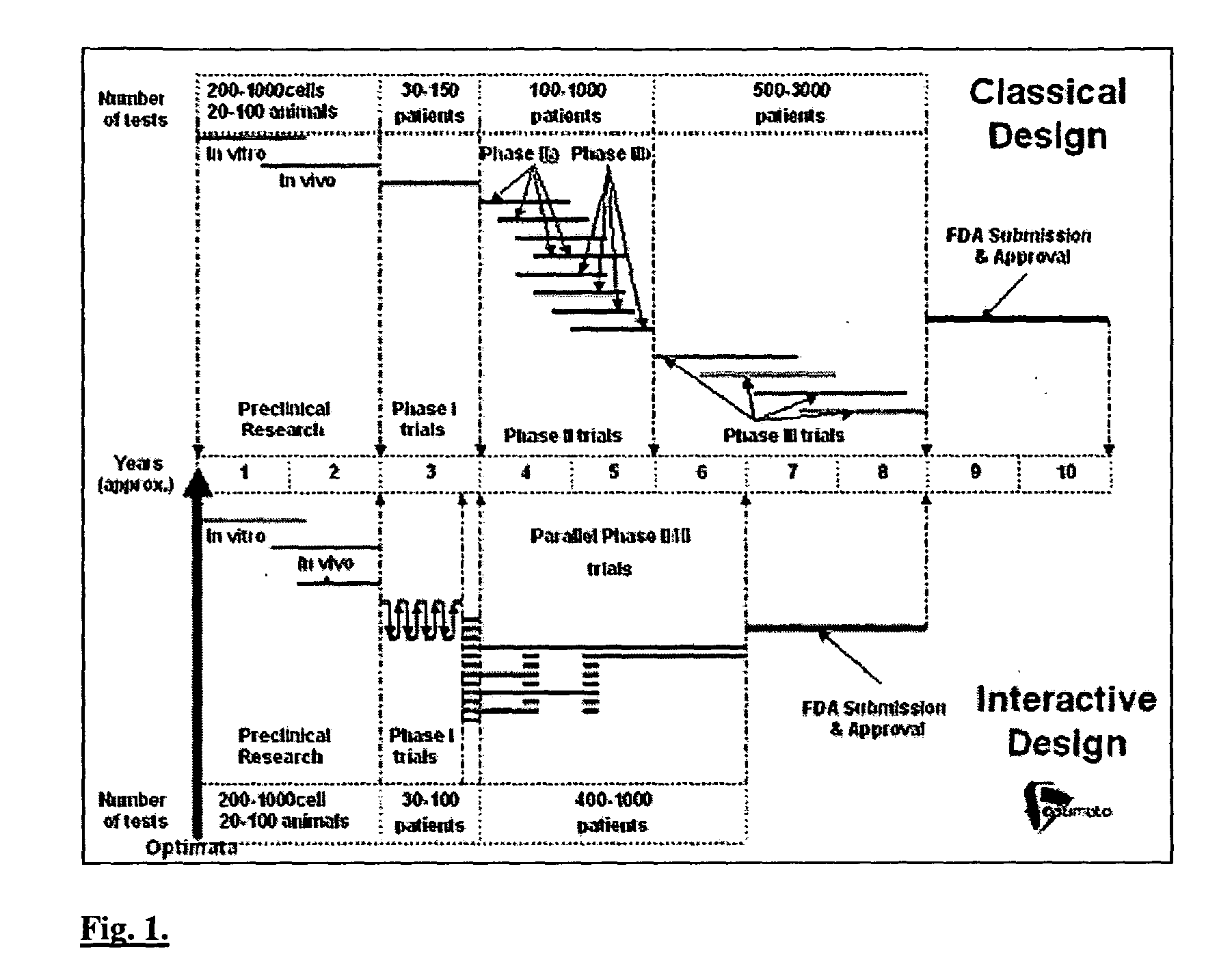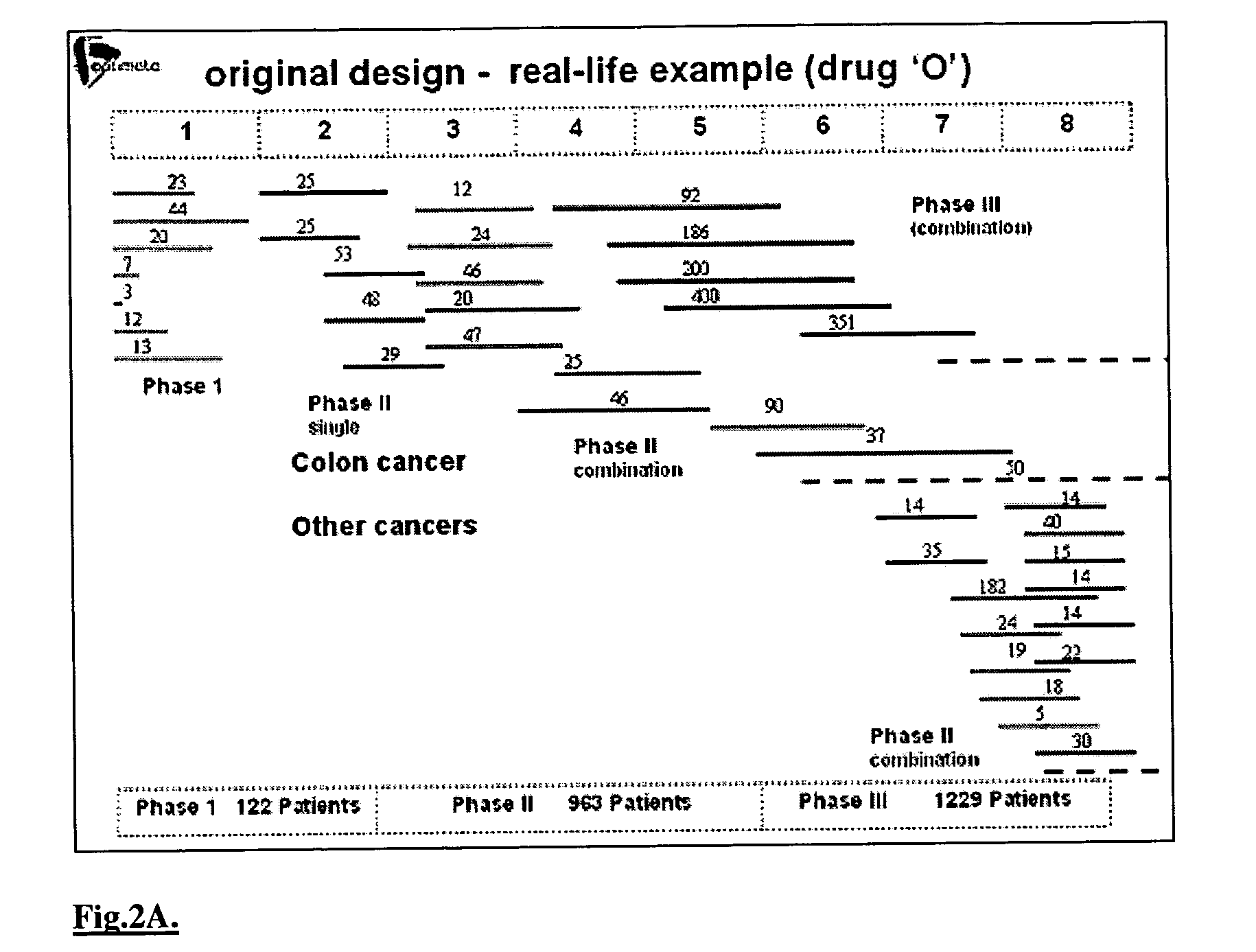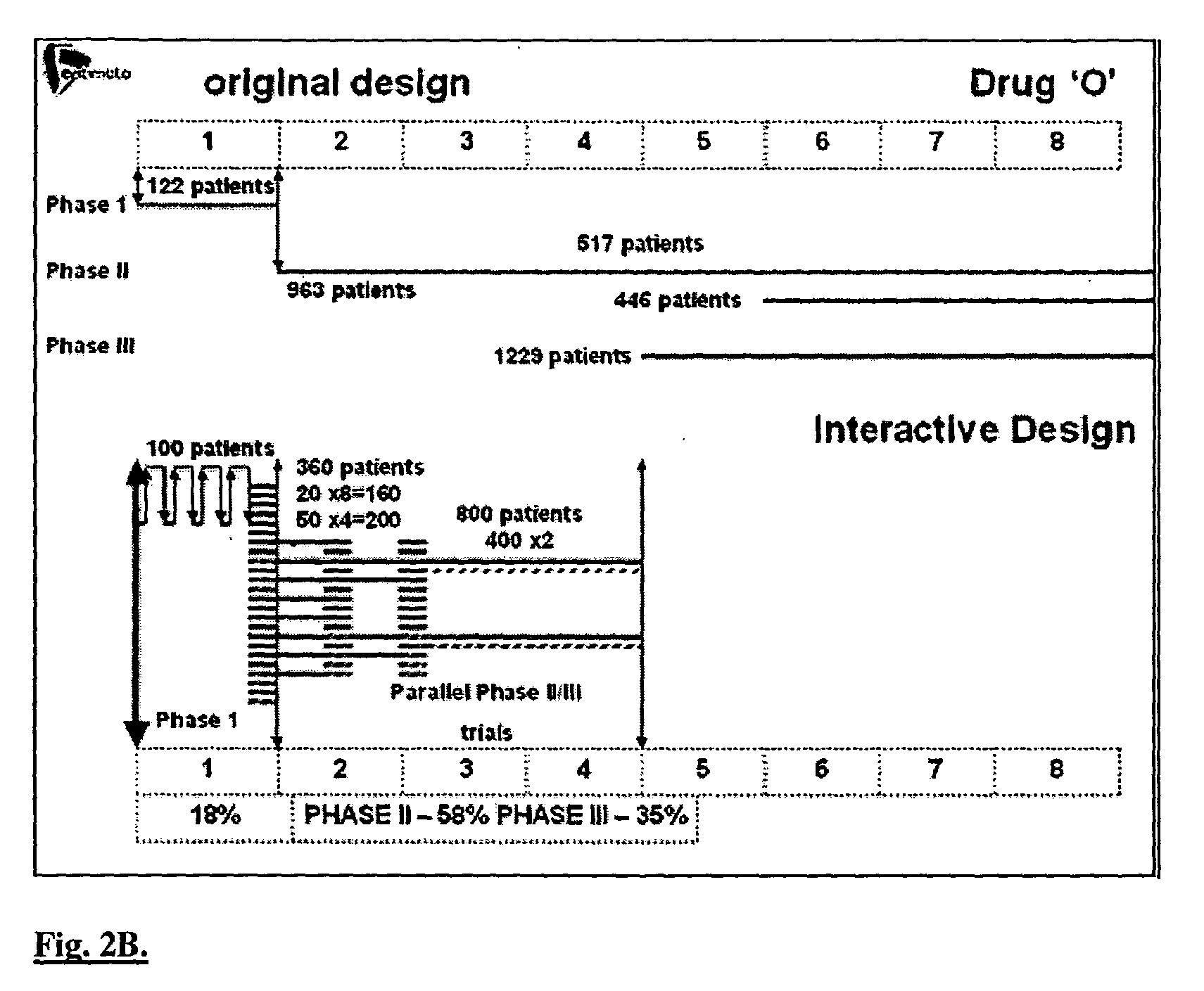Interactive technique for optimizing drug development from the pre-clinical phases through phase-IV
- Summary
- Abstract
- Description
- Claims
- Application Information
AI Technical Summary
Benefits of technology
Problems solved by technology
Method used
Image
Examples
Embodiment Construction
IV.A. SYNOPSIS
[0132] Today, there exist elaborate and highly interdisciplinary and multidisciplinary methods, which can employ modern computing facilities for integrating the enormous body of relevant biological, medical, pharmacological and mathematical (dynamical) information into comprehensive systems for simulating different drug treatment scenarios. The techniques disclosed herein are based on more than two decades of biomathematical research in the area of disease control optimization [8-28]. Thus, mathematical algorithms have been developed, which simulate the dynamics of key biological, pathological and pharmacological processes in a patient undergoing drug treatment, either by monotherapy, or by combination of cytotoxic and / or cytostatic agents, and / or by growth-factors. This set of computerized mathematical models, in conjunction with advanced optimization algorithms have now yielded an in silico patient engine, having a range of applications designed to deliver optimal dr...
PUM
 Login to View More
Login to View More Abstract
Description
Claims
Application Information
 Login to View More
Login to View More - R&D
- Intellectual Property
- Life Sciences
- Materials
- Tech Scout
- Unparalleled Data Quality
- Higher Quality Content
- 60% Fewer Hallucinations
Browse by: Latest US Patents, China's latest patents, Technical Efficacy Thesaurus, Application Domain, Technology Topic, Popular Technical Reports.
© 2025 PatSnap. All rights reserved.Legal|Privacy policy|Modern Slavery Act Transparency Statement|Sitemap|About US| Contact US: help@patsnap.com



